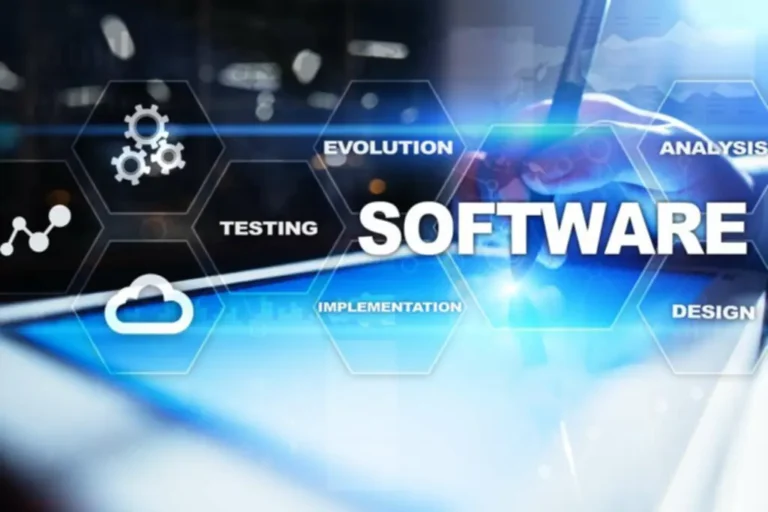Is Iterative Improvement The New Black Of Software Program Development?
Iterative waterfall mannequin https://www.globalcloudteam.com/ is a an improved model of conventional waterfall mannequin. Instead of doing every part (like planning, designing, building, and testing) just once, you go through these phases in small, repeated cycles. This helps catch and fix issues early and allows for changes based on suggestions, leading to a more refined and reliable last product. As the software evolves via successive cycles, exams must be repeated and extended to verify every version of the software program.

Incremental Vs Iterative Development, Which Is Better?

The iterative improvement methodology is predicated on the systematic repetition of iterations, which are tiny software program growth cycles. If the requirements of the project are not well-defined or are subject to vary, an incremental development method may be the popular method. They also can refine and lengthen the functionalities over time in response to changing necessities. In this article, we’ll examine and contrast iterative development definition incremental and iterative software growth, have a glance at the important thing differences between each approaches, and talk about the professionals and cons of each methodology. We’ll also discover some real-world examples of incremental and iterative development.

The Power Of Iterative Design And Course Of
Iterative improvement is all about simplifying software improvement processes by breaking them down into smaller chunks. The feature code is developed and examined in repeated iterations or cycles. With each iteration, new features may be developed and tested till the software application is in a position to be deployed to end users.

Growth Mustn’t Take Much Time

Even after your product is released, you presumably can preserve a record of all of its earlier revisions in a database. To write the code, you will adhere to the coding principles and utilise a set of back-end and front-end applied sciences, corresponding to compilers, interpreters, and debuggers. In addition, smaller portions of the software program are labored on throughout each iteration, known as incremental prototyping.
The Pros And Cons Of Iterative Software Improvement
- These sections include functionalities like user profiles, items web page, purchasing carts, favorites, checkout, and customer reviews.
- With each iteration, further features may be designed, developed and examined to add to the program’s performance.
- Once the model is refined, its output becomes extra correct, which helps prepare the system to know what is expected in real-world eventualities.
- During the third step, your team will create the primary iteration of your project deliverable.
In conclusion, iterative improvement is a software development life cycle paradigm that operates in tiny phases and iterations. This technique is carried out to guarantee the effectiveness of the group and processes, in addition to the standard of the software. Therefore, this strategy is appropriate for big software program that requires changes based mostly on suggestions and evaluations periodically as a substitute of on the finish.

Small Language Models (slms): Tiny Outperformers
To sum up, iterative growth is a software program development life cycle mannequin which works through small iterations and phases. This strategy is taken to ensure effectivity of the team and processes and the standard of the software program. This model is apt for giant software program that needs adjustments based mostly on suggestions and review every so often quite than on the very finish. Following every step of the iterative development mannequin correctly with the right tech talent on board, will result in an excellent high quality product that is aligned with the specified functionality ultimately. Ultimately, the selection of which strategy to make use of will depend upon the particular objectives, circumstances, and requirements of the project. If you want to develop a product with great high quality and value effectivity, the incremental technique could also be an ideal choice.
Using an iterative approach, these merchandise are often up to date with new features or advantages, minus some of the problems of earlier editions. Even writers, musicians, and cooks use the iterative course of to refine their inventive work. During this step within the iterative course of, you will define your project plan and align in your general project aims. This is the stage where you’ll outline any hard requirements—things that must occur in order for your project to succeed.
Iterative Process: A Starter’s Guide
Anyone can use the iterative course of, however designers, builders, educators, scientists, and mathematicians most often utilize it. The concept and the answer eventually converge, similar to in a math function or a scientific discovery, since you progress towards your required end result each time you iterate on the product. And—whether or not you implement the iterative method—always try for steady enchancment in your work. If you restart the iterative course of, ensure everyone continues to be aligned in your project goals. The iterative process can take weeks or months, relying on how many iterations you run via.
It is type of the same because the classical waterfall mannequin, except some modifications are made to increase the effectivity of the software growth. However, the iterative growth course of has benefits and disadvantages. Once you may have a transparent picture of these, you’ll be capable of determine whether or to not use the iterative development method in your small business. However, it is smart to observe this step to determine the software’s structure. Here, the design team establishes technical requirements like companies, languages, information layers, and so forth. Working iteratively allows the developer more flexibility in incorporating changes.
Based on these knowledge, you will outline a general imaginative and prescient of the future project and its performance. In 2018 we made a contract with a consumer from California who approached us with thought of social media app growth. There was a clear concept of the app, which wanted clarification and validation. In such situations, we turned to iterative development, which helped us validate the thought and gave groundbreaking insights that reworked the product’s imaginative and prescient. Integration testing verifies that the models of code perform properly when built-in and a consumer acceptance test is completed to determine if the system satisfies the consumer necessities for that iteration. Shorter improvement cycles are referred to as iterations or sprints, that are time-boxed.
